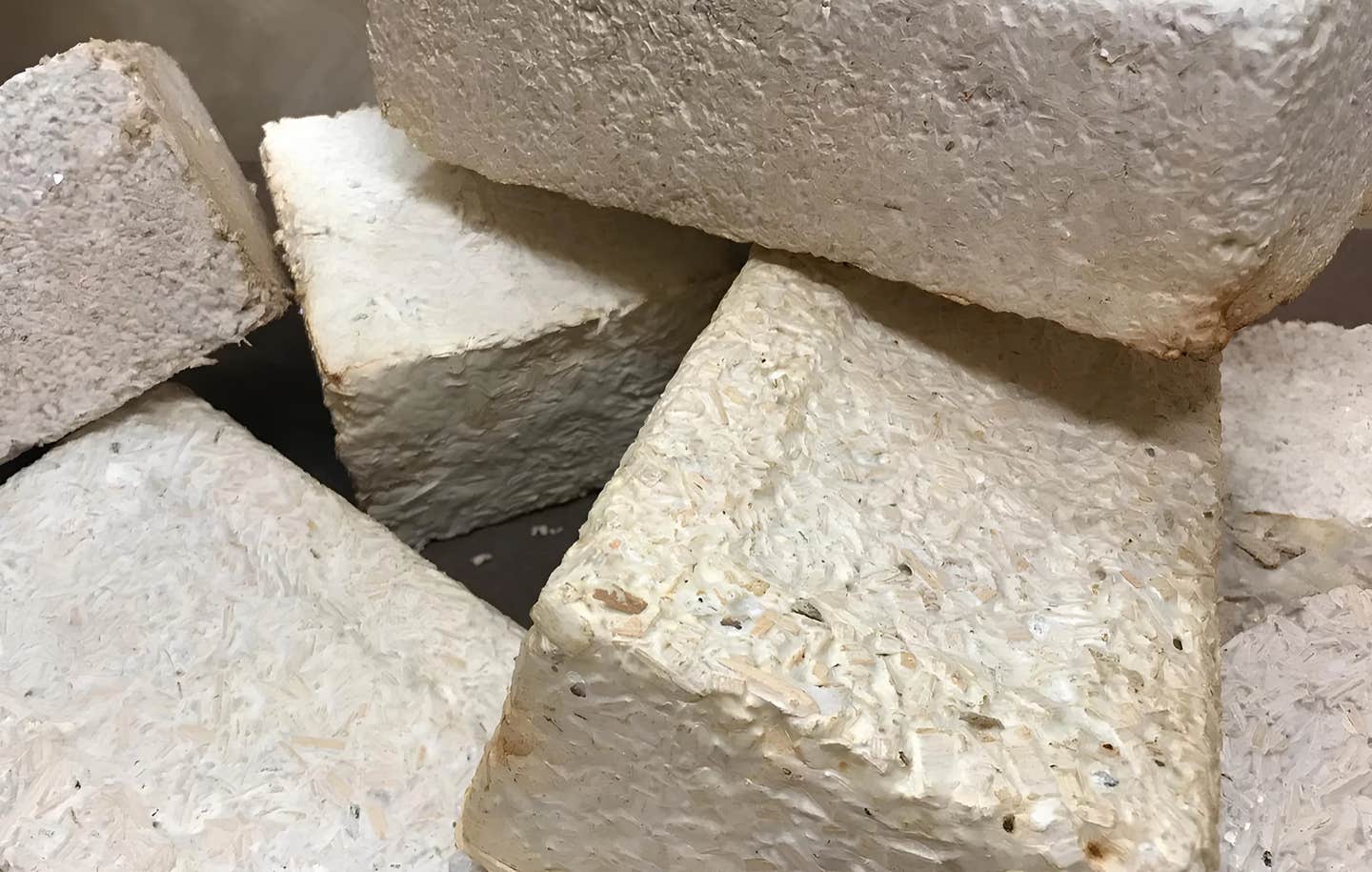NASA explores using fungi to construct homes on the Moon and Mars
NASA is exploring solutions to grow habitats from fungi, not only for future extraterrestrial homes but also for sustainable living on Earth

Bricks produced using mycelium, yard waste and wood chips as a part of the myco-architecture project. Similar materials could be used to build habitats on the Moon or Mars. (CREDIT: NASA)
Science fiction often depicts our future on Mars as filled with sleek machines, metallic cities, and flying cars soaring above red sand dunes. Yet, reality might unfold differently – and “greener.” NASA is currently exploring technologies that could grow habitats from fungi, not only for future extraterrestrial homes but also for sustainable living on Earth.
At the forefront of this innovative approach is the myco-architecture project from NASA’s Ames Research Center in California’s Silicon Valley. This initiative is developing technologies that could "grow" habitats on the Moon, Mars, and beyond using fungi, particularly the mycelia, which are the underground threads forming the main body of a fungus.
“Traditional habitat designs for Mars are like a turtle – carrying our homes with us on our backs – a reliable plan, but with huge energy costs,” says Lynn Rothschild, the principal investigator of this early-stage project. She proposes an alternative: harnessing mycelia to grow these habitats once on-site.
The vision is to equip human explorers with a lightweight, compact habitat made from dormant fungi, which can endure the lengthy journey to Mars. Upon arrival, by simply unfolding the structure and adding water, the fungi would grow around the framework, forming a fully functional human habitat. Importantly, this process would occur within the habitat, preventing contamination of the Martian environment.
This research falls under NASA’s Innovative Advanced Concepts program (NIAC) and is part of the synthetic biology field, which explores how life itself can be used as technology. While it will be some time before we can grow usable habitats on Mars, the project is making strides in proving the potential of these creative solutions. The journey begins with experimenting with fungi.
Fungi, a group of organisms that produce spores and decompose organic material, are more familiar to you in everyday life than you might realize. They include yeasts used in bread and beer, mushrooms in your salad, and even the molds that can grow on forgotten food.
They’re also responsible for producing antibiotics like penicillin. However, the mycelia, the part of the fungus you probably haven’t seen, consist of tiny threads that build complex structures with extreme precision. These threads can be encouraged to form new structures, ranging from leather-like materials to the building blocks of a Mars habitat.
Related Stories
Designing a livable home for future astronauts requires more than just growing a roof over their heads. Astronauts will need to have all their basic needs met, just as on Earth, while also coping with the additional challenges of living in a harsh environment on a distant world.
The myco-architecture project isn't just focused on creating a protective shell – it’s about designing a complete home. This home would be more than just walls; it would include an entire ecosystem, featuring multiple kinds of organisms that coexist with the humans it’s meant to protect.
Like the astronauts, fungal mycelia are living organisms that need to eat and breathe. This is where cyanobacteria play a crucial role. Cyanobacteria are a type of bacterium that harnesses energy from the Sun to convert water and carbon dioxide into oxygen and food for the fungi.
These components come together in a sophisticated habitat concept featuring a three-layered dome. The outer layer consists of frozen water ice, possibly sourced from the Moon or Mars. This ice layer shields against radiation and allows water to trickle down to the second layer, where the cyanobacteria reside. The cyanobacteria use sunlight filtering through the ice to photosynthesize, producing oxygen for the astronauts and nutrients for the third layer – the mycelia.
This final layer of mycelia organically grows into a sturdy home. Initially activated in a contained environment, the mycelia are later baked to kill the living organisms, providing structural integrity and ensuring no contamination of Mars occurs. Even if some mycelia were to escape, they are genetically engineered to be unable to survive outside the habitat.
But this is only the beginning. The potential applications of mycelia extend beyond space habitats. They could be used for water filtration and biomining systems that extract minerals from wastewater, another project being explored in Rothschild’s lab.
Additionally, mycelia could be harnessed for bioluminescent lighting, humidity regulation, and even self-regenerating habitats capable of repairing themselves. Considering that about 40% of Earth’s carbon emissions stem from construction, there is a pressing need for sustainable and affordable housing solutions here on Earth as well.
“When we design for space, we’re free to experiment with new ideas and materials with much more freedom than we would on Earth,” Rothschild explains. “And after these prototypes are designed for other worlds, we can bring them back to ours.”
The extreme environments of the Moon and Mars will demand new ways of living – growing homes instead of constructing them, extracting minerals from sewage rather than rock. By turning to the elegant systems found in nature, we can develop solutions that are both green and sustainable. Whether on distant planets or our ever-changing Earth, fungi could play a pivotal role in shaping the future.
Note: Materials provided above by The Brighter Side of News. Content may be edited for style and length.
Like these kind of feel good stories? Get The Brighter Side of News' newsletter.



